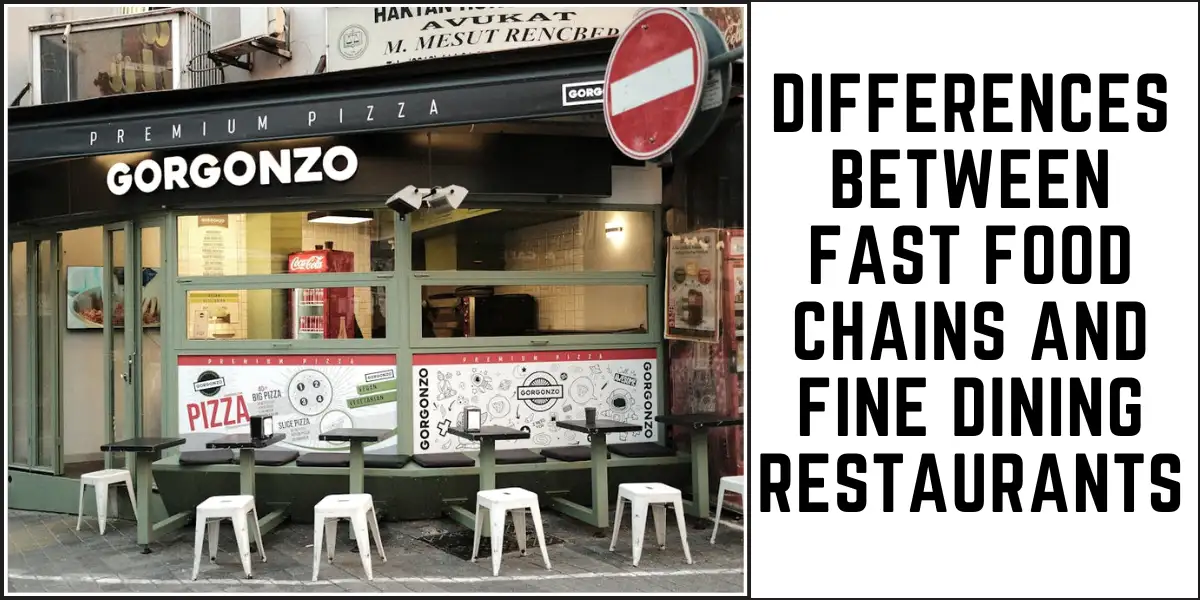Differences Between Fast Food Chains and Fine Dining Restaurants

Differences Between Fast Food Chains and Fine Dining Restaurants
The food is the echo of a culture or mood or pace. In a world that offers from a quick burger to a six-course, extravagant truffle-infused meal served under a chandelier. Dive into the flavor of what really separates the two ends of the dining spectrum.
Dining Experience: Speed vs. Sophistication
Be it in a drive-thru, or stepping up to the counter, the straightforward goal is-get your food fast and get on with your day. Tables, if they exist, usually lead to a minimalist look, with the whole ambience geared towards quick turnover. The customer does not interact much with the staff apart from making an order, expect limited choices of customization.
By contrast, in fine dining, time is an important element. Everything about the experience-from a host greeting with you at the front door to the last sip of post-meal espresso-is orchestrated. The energy of the house is more theatrical and intimate, garnishing with a carefully chosen soundtrack, lighting, and themes on tables
Ambience and Aesthetics: Functional vs. Artistic
Quite rightly said, they are efficiency-oriented. Underlined bold colors such as red and yellow-not by accident, they are psychological-claim to turn on appetite and quick decisions. Plastic seating, a minimalistic facade, and promotional posters create an environment dedicated to movement. Bright, energetic yet very much functional.
Fine dining restaurants can almost throw you into another world. The ambience is created to manifest elegance, calmness, and style. Lighting is often dimmed for comfort, choosing music to amplify moods rather than distract, but the total look subsumes guests to linger in the moment.
Culinary Craftsmanship: Mass Production vs. Artisanal Approach
On the other hand, fine dining kitchens are shrines of culinary art. Training most chefs have gone through is formal-an artist often living within them. Their creativity merges with flavors, textures, and plating to come up with cuisine that is unique and unforgettable to diners. Ingredients tend to be fresh and locally sourced, often seasonal, and preparations complex.
Menu Philosophy: Predictability vs. Personalization
At the core of fast food menus is predictability: you walk in already knowing what was to come-burgers, fries, and wraps, all of them combined with sodas that cut the effort. Simplicity is what is said to be the trump card, and more often than not, calorie counts are listed directly on menu boards. A tasting menu changing week or day, depending on what is fresh and in-season, could be possible.
Service Standards: Self-Serve vs. Silver Service
When you step into a fast food dining area, in many ways you are meant to serve yourself. At the counter or on a touch screen, place your order-on-the-fly. You get your napkins and your condiments, after all, and essentially clear the table yourself. The staff’s role is hence primarily transactional and almost devoid of any interaction beyond fulfilling orders as quickly as possible.
On the contrary, in fine dining, good service becomes almost another art form. Waiting staff have been given considerable training, including but not limited to the menu; ideally, therefore, they have manners, timing, and hospitality drummed into them.
Price Point: Budget vs. Investment in Experience
You can usually get a meal there for under 10 bucks-da-da, and promotions and value menus make for a cheaper dining session. The target market includes students, busy workers, parents with increasing cost-effective mouths to feed, anyone who needs a fast and hearty meal and not wanting to burst their wallets.
Fine dining charges the earth mainly because they deliver top-notch food. You pay for top-quality ingredients, expert preparation, exceptional service, and a carefully designed experience.
Target Audience: Convenience Seekers vs. Experience Enthusiasts
Thus, the fact that it is global opens fast food to one and all; it is almost to become a part of every person’s life. Fine dining makes a restaurant a place for an experience where all pursuits are satisfied. These might include culinary enthusiasts, special celebration by a business executive, a romantic dinner date for two, or all those looking for some local haute cuisine. Expectations are higher, by the way- a lot higher-and so are the number of details. When it’s dinner at this level, it’s truly about occasion and memory and indulgence.
Sustainability and Sourcing: Scaled Up vs. Mindful Practices
With fast food, sustainability can be very hard due to its very own size. Large-scale production, disposable utensils and packaging, feelings of being a global citizen or accomplishing dominance over the global food chains do no good to the environment. Even though these are starting at some level with some of these chains, it should yet find a way to improve.
Within fine dining circles, indeed, sustainability is more than a key issue today. Many restaurants preach about farm to table, have contracts in place with local farmers, and design menus according to the produce online at any given time of the year.
READ MORE :: Top 10 Handicraft Furniture Manufacturers in Jodhpur

